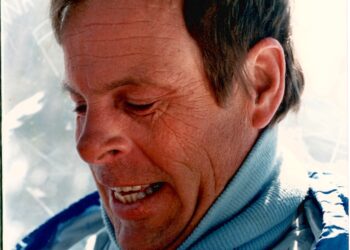By Eric Knoff Gallatin National Forest Avalanche Center
A bitter cold snap hit the Northern Rockies in early December, turning much of the
existing snowpack to facets and directly influencing snow stability in the southwestern
Montana. Now, the snowpack is unstable in our area. Here’s why.
From the time snow crystals fall from the sky to the time they blow away or melt in
spring, the shape and structure of each crystal never stops changing. This is known as
snow metamorphism.
Snow metamorphism determines if individual snow crystals are rounding, a process that
makes them stronger, or faceting, when they become more angular-shaped and weaker.
These shapes affect how the crystals interact with each other, a relationship that
ultimately dictates what kind of layer is formed, and whether it’s strong or weak. Overall,
the interaction between these individual layers determines snowpack stability.
Three main variables drive change within the snowpack:
– temperature
– temperature gradient
– pore-space size
Of these, temperature gradient is the most influential in determining crystal formation in
an alpine snowpack.
Temperature gradient – or TG – is the difference in temperature over a distance. If the
temperature within the snowpack differs more than 1 degree Celsius per 10 cm of snow
depth, a strong TG is present. These conditions cause individual grains to become
angular and faceted; in turn, these faceted crystals can form weak layers that may
persist within the snowpack for long periods of time.
When a weak layer forms at or near the snow surface it is not a problem; however, once
it is buried and stressed by the weight of new snow, it can produce unstable conditions.
When faceted layers fail, they collapse like a row of dominos, reducing friction. If the
slope is steep enough when a weak layer collapses, an avalanche will likely take place.
Signs of instability such as cracking, collapsing and recent avalanche activity are bull’s
eye data that buried weak layers are present in the snowpack.
Becoming an active observer of snow metamorphism can help backcountry travelers
make more educated decisions in avalanche terrain. Knowing the processes by which
the snow crystals change is advantageous, because it allows you to anticipate snowpack
changes and puts you ahead of the game.
__________
Weak layers
Three distinct weak layers form under strong temperature gradients and often produce
dangerous avalanche conditions in the Northern Rockies:
Depth hoar
Depth hoar forms when a shallow snowpack is exposed to an extended period of cold
and clear weather. Large cup-shaped facets form and may reach 4-10 mm in size.
These grains are cohensionless and have a hard time bonding due to their angled
structure and large size. Once depth hoar forms, it can be preserved in the snowpack by
subsequent storms and create instability for weeks or even months.
Near-surface facets
When the snowpack becomes deeper, only the top 15-20 centimeters of the snow
surface are affected by air temperature fluctuations. When the surface is subjected to
fluctuating daytime and nighttime heating and cooling cycles (which occur between
storm cycles and are called diurnal fluctuations), the snow on and near the surface
begins to facet, creating near-surface facets. The longer the snow surface is exposed to
these temperature fluctuations, the weaker that snow becomes.
Near-surface facets are smaller in size than depth hoar (1-2 mm), but they are quite
pesky and can persist in the snowpack for long periods of time. They are responsible for
nearly 60 percent of all avalanche accidents in southwest Montana.
Surface hoar
An equally dangerous weak layer is surface hoar. Essentially frozen dew, surface hoar
forms on cold clear nights and, unlike other types of facets, it’s created through the
growth of new crystals, not the metamorphism of existing snow crystals. Surface hoar
is fragile and is easily knocked down by wind or sun – it may remain standing in some
areas and disappear in others.
Once buried, sporadic distribution can make this layer very unpredictable. Buried layers
of surface hoar are renowned for fracturing far and wide and can create avalanches
capable of propagating into low-angle terrain.
Eric Knoff is an avalanche forecaster for the Gallatin National Forest
Avalanche Center, and also for Glacier National Park during spring
plow operations for the Going to the Sun Road. Check out the GNFAC’s
daily advisory page for current weather and snowpack information













